
NovaSAR Satellite over Australia. Credit: SSTL
You might have heard that Australia will be establishing its own space agency. But you might also be wondering what that actually means. Does it mean we’ll be sending rockets to Mars? Or landing the first Aussie on the Moon? A review into Australia’s space industry capability is currently underway and due to deliver its recommendations on the shape of the national space agency to the Australian Government soon, so watch this space.
What we do know is that much has changed since the space race of the ’50s and ’60s. When most people think of a space industry, they think about big projects like the International Space Station, the Voyager program, or the Mars rovers – but today organisations are launching their own satellites, and they are the size of a loaf of bread. So we’re asking ourselves, what’s next for this new frontier? Here are the top five trends we see for the space industry in 2018.
Growth in global collaboration
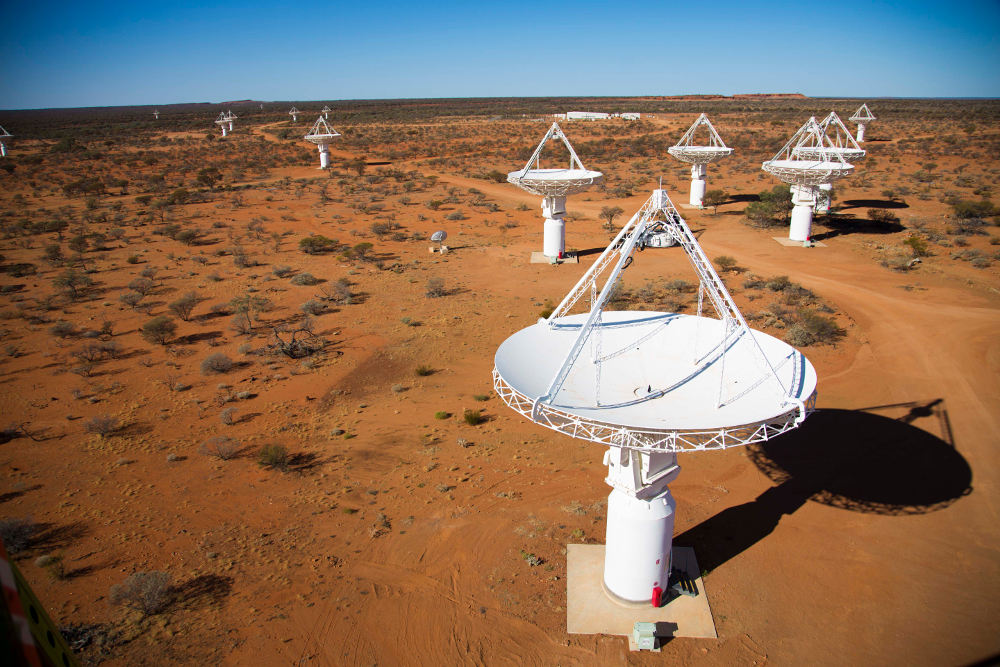
Our ASKAP telescope is the fastest radio telescope in the world for surveying the sky.
For Australia to be successful in the global space market, technical capabilities alone won’t be enough. The most successful innovation is driven by partnerships. Today we’ve announced that our nearly 30-year research and development relationship with international aerospace company Boeing will enter a new phase: we’ll be working together on space technologies as both our organisations focus on the opportunities presented by Australia’s fast-growing space industry.
The joint research will explore opportunities for space infrastructure and ground-based space facilities in Australia that could be beneficial for a range of space-related activities. Other possible areas of space-related research include the development of novel materials, sensors and software for data analytics.
Big data
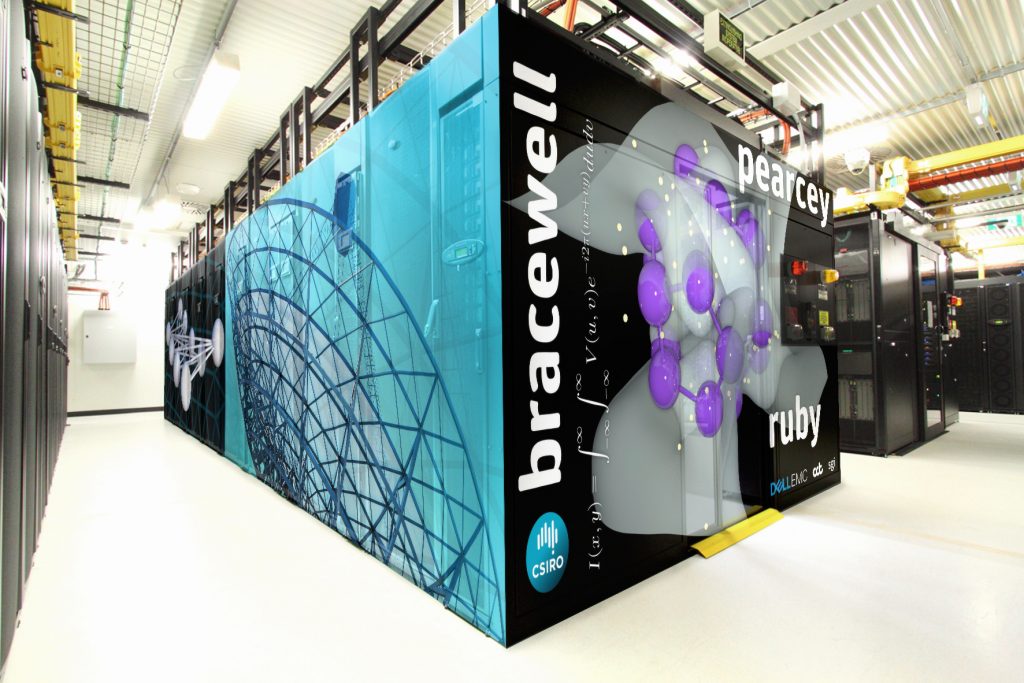
Bracewell is one of our large scale scientific computing systems for deep learning, a key approach to furthering progress towards artificial intelligence.
2018 will see the greatest amount of data ever captured from space, from satellites observing Earth from above and via instruments on the ground seeking to learn more about the Universe in which we live.
When our new ASKAP radio telescope is complete it will be transmitting a mind-boggling amount of data at a rate of one terabit per second from each of its 36 antennas, to be processed at our observatory site and via the Pawsey Supercomputing Centre in Perth.
Our researchers co-developed the original Australian Geoscience Data Cube in a close collaboration led by Geoscience Australia and with National Computational Infrastructure. This has now grown to become an international ‘OpenDataCube’ partnership, which supports the establishment and operation of over 25 Data Cubes around the world. These are capable of housing and processing petabytes of global satellite Earth observation data from multiple satellites.
Not only do we need massive computing power to handle the massive volumes of data from space, we also need to interpret that data – more than any human could sift through in a lifetime. That’s where automated techniques come in. Our teams are using machine and deep learning techniques to interrogate big data sets in ways that would otherwise be impossible or far too time consuming.
Faster and more frequent detection of major events
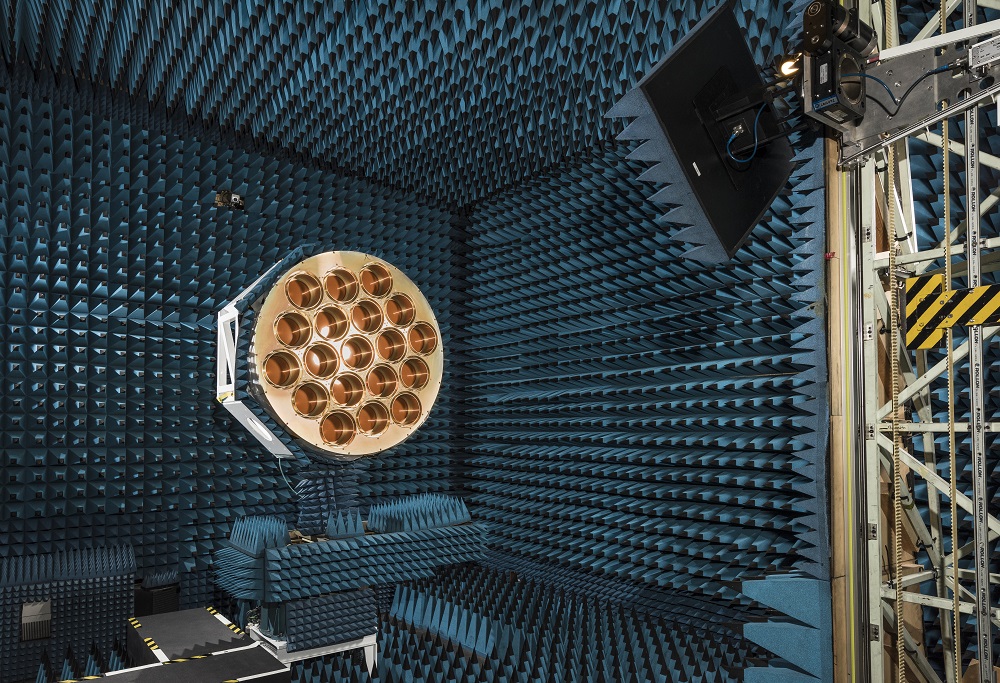
Large gold disc with 19 holes on its face set up on a stand in the middle of a room covered with blue foam cones.
The 19-beam receiver for FAST being tested at our lab in Sydney before being shipped to its new home in China.
In 2017 we saw the detection of major astronomical events, including more gravitational waves and fast radio bursts. And we’re likely to see more of these and in much greater detail as new telescopes come online.
We’ve been leading the way in the development of new technologies for telescopes here in Australia and around the world that will help to paint an even richer picture of the Universe.
In fact, we’ve just delivered a 19-beam receiver or ‘radio camera’ for the world’s largest single-dish telescope, FAST, in China. We expect that FAST will discover many new pulsars (rapidly spinning neutron stars) that may, in the future, be used as navigation tools for space travel.
Life on Earth
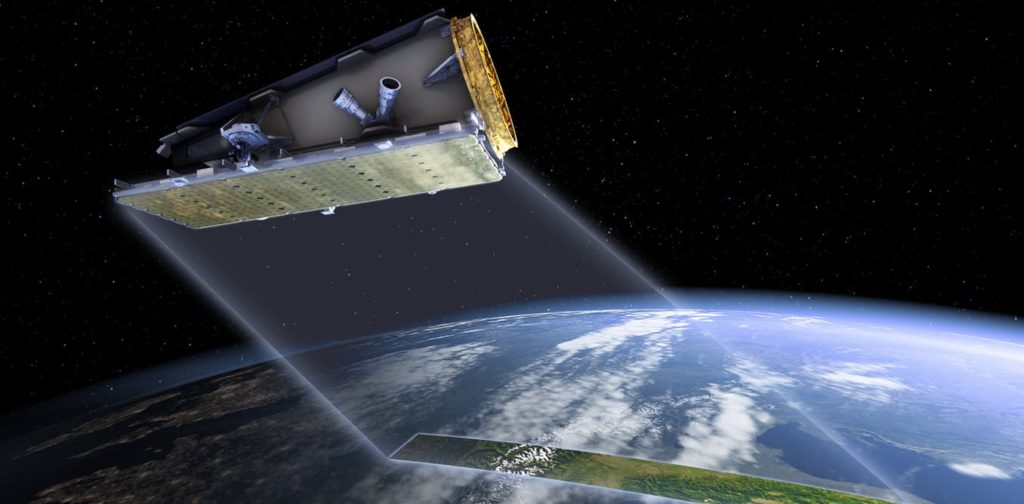
CSIRO leases time from NovaSAR satellite for images of SA bushfires, floods
The NovaSAR satellite will be used to help us respond better during bushfires, floods and other disasters
It’s not just looking out into space that will be bigger and better in 2018. It will be the year we are able to see planet Earth more clearly than ever before. This will be made possible in part because of the increasing rate at which small satellites, called CubeSats, are being launched into space. Together with larger satellites, we’re being provided with a wealth of data about our planet from which we can gain valuable insights for managing natural environments, and creating agricultural and industrial opportunities.
Last September we announced that we would be taking a 10 per cent share of the NovaSAR satellite due to be launched early this year. We’ll be running this as a national facility, giving Australian researchers access to near-real-time radar Earth observation data over Australia and worldwide. This data could be used in disaster response which is particularly significant during bushfire season.
Democratisation of space access
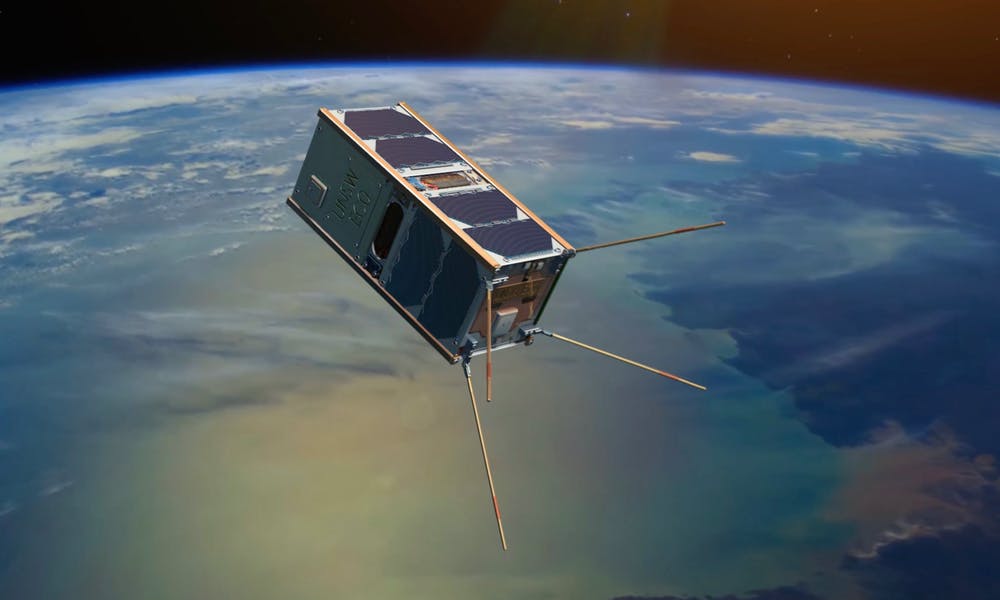
Artist’s impression of UNSW-ECO CubeSat in orbit. Credit: UNSW
2018 will also see space become accessible to more people. This will be in line with increased venture capital investment in start-up space companies and the growth of boutique space agencies focused on niche areas. There is a growing number of Australian small-to-medium businesses seeing challenges and opportunities presented by this new era in space –Space 2.0.
The range of partnerships, joint ventures, co-investing and licensing options we have to offer will help position Australia at the centre of ‘new space’. These include Main Sequence Ventures, our new venture capital company, which is looking to invest in Australian deep tech ideas from publicly-funded organisations and SMEs who partner with a publicly funded organisation.
This year is really the year of space and it’s safe to say, we’re excited about the future and the role that Australia, and we, can play.


2nd February 2018 at 8:05 pm
I think the worst thing we could have is a big bureaucracy ‘NASA down under’ that runs a taxpayer funded government run end to end space program. The best approach would be an agency whose primary role is to support and coordinate the growth of Australian space industry and let the private sector lead.
The agency’s focus should be on building sovereign space capability – from satellites to space launch to ground segment and space industry – that can make Australia commercially competitive in the global space sector. Plus a portal for international collaboration and space science. And finally, an interface between Australia’s defence requirements in space and the commercial sector.
Let’s not get sidetracked with manned space (we can send prospective astronauts to NASA or ESA, or rely on commercial companies like SpaceX for that). Focus on developing key sovereign space capability so that we no longer depend almost entirely on overseas providers for our essential space requirements, be it civilian or defence related.
31st January 2018 at 10:04 pm
It’s great that Australia is entering the scientific arena. wish us luck let the probes discover new stars planets and minerals. whilst we are at it lets hope the scientific community proposes a political system which will govern with a bipartisan flaire. for too long has democracy prevailed to no avail.there continues to be unemployment, poverty aboriginees still are in the stoneage.they are sill the underpriveleged. if democracy is a
great system why are there so many homeless people. why cant governments create the enviorenment for the construction of large scale high rise apartments affordable apartments where the average joe blow can blow his horn.housing prices are way beyond and no one cares none of our great politicians care a brass button. let them eat cakes if they have no bread.
and they are going to outer space to see if there is life.
when the life here on planet earth is allowed to wallow in their poverty, without adequate housing and wherewithall for subsistence. i dont recommend that we abandon scientific probes i whole heartedly endorse them because the spinoffs have enriched the world of science.
30th January 2018 at 2:06 pm
Thanks Nikki, really interesting to hear about the upcoming “near-real-time radar Earth observation data over Australia” that can be used in disaster response, there will be plenty of Emergency Response agencies keen to hook into this.
Pingback: Why private industry is the next wave of space exploration - Create News
Pingback: Australia takes up space in 2018 – MeasurementDataBases for Industry & Science